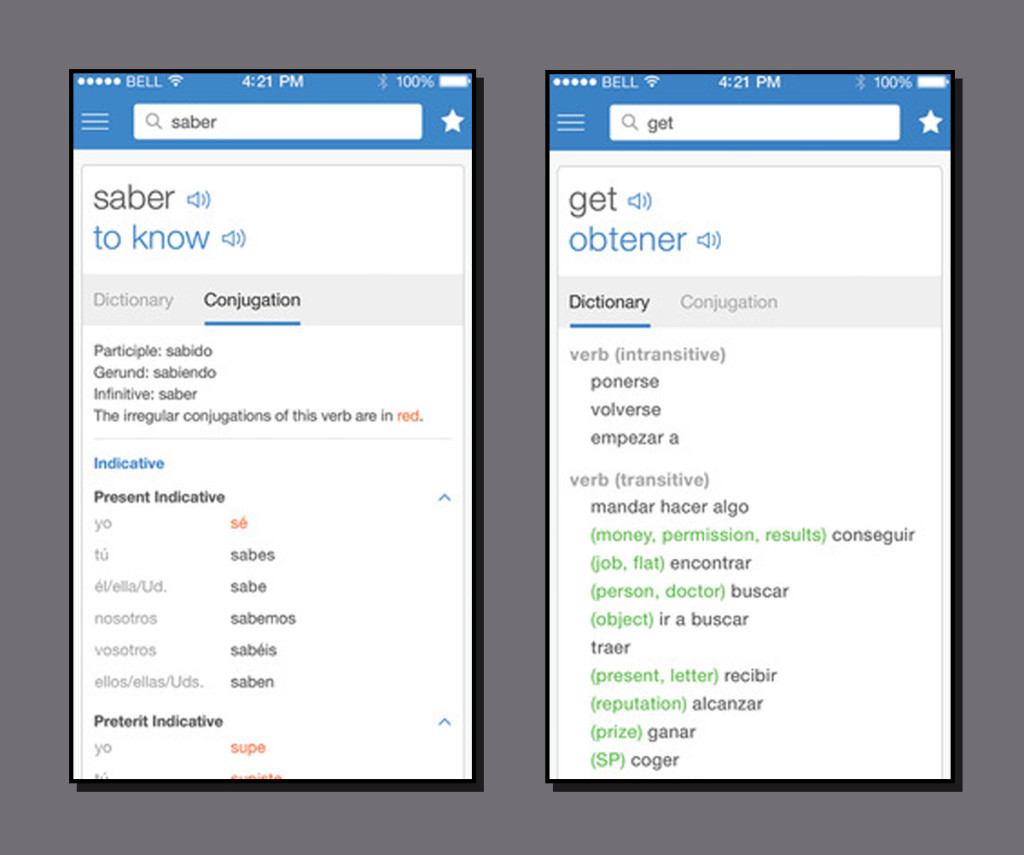As a result of investing greater time and effort in their own content, SpanishDict has created a more comprehensive, fulfilling experience for users.
SpanishDict is the world’s largest Spanish-English dictionary, translation, and language learning website and mobile app with more than 12,000,000 unique visitors per month.
This kind of on-the-go resource can prompt fleeting interactions with users. But SpanishDict has increased engagement by expanding their educational focus, revamping their blog efforts, and taking on the very ambitious task of creating their own dictionary.
They’re controlling every bit of content creation from start to finish, leading to more freedom for the company and a more memorable experience for users.

We spoke with SpanishDict product associate Helena Witte and product growth lead Ali Zelek about their efforts to build a unique experience.
As product associate, Witte guides apps through prototyping, design, testing, development and finally, deployment. On the growth side, Zelek manages the blog and user engagement.
From Reference to Learning
Unlike many tech products on the market, which have been around for just a few months or maybe a couple of years, SpanishDict has been on the scene for well over a decade.
One attempt to keep the company fresh came last year when they offered the $15k #LoveSpanish scholarship in honor of National Hispanic Heritage Month and their 15-year anniversary. Students applied by writing a Tweet or Facebook post sharing why they #LoveSpanish.
The scholarship was such a success (garnering over 3,000 applications) that they offered it again this year. The campaign was even promoted by the White House!
Education is a big part of SpanishDict’s mission as 60% of users are using the service to supplement a Spanish class they’re taking. They try to foster an ongoing learning environment that not only teaches definitions and conjugations but also provides context surrounding the language.
One way they do so is by encouraging users to discuss the accuracy and idiosyncrasies of the language using Q&A Forums on their website. With at least 100,000 questions and answers available, they “aim to cultivate a fun and active community where members can ask and answer questions, practice with each other, and experience the joy of using a new language.”
But they wanted to create even more opportunities for engagement that would make a lasting impact on how (and why) people learn Spanish. To do this, they looked to their blog to capture the historical influences and cultural impact of the Spanish language.
Better Blogging
Like other web company blogs of the Dot Com Era, SpanishDict’s early blog posts focused primarily on product announcements. Accordingly, most posts were internally-oriented, focusing on the company rather than the user.
Even in 2015, it’s a common mistake that startups continue to make. As a founder, you’re devoting all your resources to building products users love, so of course it makes sense that you want to shout it from the rooftops when a product — or even a new feature — launches.
But, while product announcements may be exciting for members of the company, not all of them are post-worthy for users. And they’re certainly not blog-sustaining.
This summer, SpanishDict started creating content better targeted to their user, beyond ways that are directly tied to Spanish learning. Specifically, they began exploring the history of the Spanish language, plus Spanish culture, travel, and food.
Such posts covered topics like: “5 Things You Need to Do in Barcelona,” “What Latin American Movie Should You Watch Tonight?,” and “How Learning Spanish Boosts Your Brain Power.”
This approach provides Spanish-learning students with a broader perspective on what they’re working toward, which also makes it easier to look past the more immediate frustration that can accompany verb conjugations.
SpanishDict now maintains two blogs with weekly posts: one is in English and caters to English speakers learning Spanish, and the other is in Spanish and caters to Spanish speakers learning English.
Zelek said that lists and quizzes have been the most successful so far. “We are analyzing pageview data for each article, as well as tracking which articles are shared the most on other websites and across social media platforms,” she explained.
When you’re able to spot trends regarding which articles are popular with your audience, you can start to find common ground in their pain points as well.
For example, data showed that the post “10 Words and Phrases to Know Before Traveling to Argentina” really resonated with readers. With further research and data, they may find that travel articles far exceed other efforts.
A good way to take advantage of this could be to create specific language guides for Argentina, write a post with translations of common menu items, or suggest historical sites for people to check out while they’re visiting the country.
Managing Writers
Zelek puts a lot of energy into recruiting and managing writers who, in turn, roll out quality pieces every week. Right now, they’re working with four writers and inviting readers to contribute guest posts, as well.
Writers are able to pick from a list of topics or come up with their own. Zelek works to ensure that there is no overlap, then edits and publishes the posts.
Creating a workflow with your writers that allows a couple weeks of backlog is pivotal for maintaining a high level of quality and avoiding publishing under pressure. It’s also important to listen to ideas from your writers, as that will give you a broader sense of how people think about your topics in the wild, rather than just through the lens of your product.
One way we implemented that here at ThinkApps was with a post called “Startup Advice from House of Cards’ Frank Underwood.” We published the post in conjunction with the season three premiere to capitalize on the buzz already surrounding the hit Netflix show.
By remaining open to ideas that were slightly outside the scope of our typical posts, we were able to create content that was original but still highly relevant to our audience.

Writing a Dictionary
Until recently, SpanishDict’s one million translation entries have been sourced from various dictionaries. This process is complicated and can lead to a lack of cohesion and quality control.
That’s why they’re taking on the extensive task of creating their own dictionary — NeoDict. Not only will they have complete control over quality and use cases, the process is ultimately simpler and easier to scale.
Your company’s self-authored masterpiece may not be a dictionary but instead a unique API or personalized activity feed functionality. Whatever your most valuable resource, do what you can to build it from scratch and customize it to the exact needs of your business.
As you might imagine, writing a dictionary is a tedious undertaking, so SpanishDict has been working on it since last year and taking the project quarter by quarter. To manage the immense workload, they’ve hired contract writers and formalized a review process so the content team has more capacity to work on the dictionary exclusively.
“Our dictionary entries include multiple examples, extensive conjugation data, and pronunciation examples to help our users use the Spanish and English languages with confidence,” said product associate Witte.
“Our hope is to facilitate communication where it matters most — when you’re traveling in a new place, acing your Spanish class, or using Spanish on the job.”
What’s Next
SpanishDict has taken on several new projects in the past year, all in an effort to adapt to their users’ needs and create more freedom and flexibility for the company to pursue future endeavors.
On the horizon, they’re going to build on their minimal Apple Watch app as they continue to learn how users interact with it.
With their own collection of unique definitions in NeoDict and the growing influence of their blog, SpanishDict can continue to ensure their users are getting a top notch experience that’s completely unique to their service. From here on out, their content creation efforts will build on the strategy of these pivotal projects.

